I’m sure that during your career, each of you have reported to multiple supervisors with leadership skills ranging from the “boss from hell” to being a trusted “mentor” (probably more of the former). Everyone over a career has experienced the depths of contempt to a high of ultimate respect toward their superiors. The best boss was someone for whom everyone would gladly jump off a cliff. The bad boss was someone who led their troops to the edge of the cliff and pushed them over while retreating to safety in the end.
In major wars, there are two types of generals: “stay-at-home” and “front-line.” Please don’t get me wrong, I’m not passing judgement on either type. Gen. Dwight “Ike” Eisenhower never really had any front-line combat experience. However, his talents (i.e., political and managerial) were crucial to winning World War II. Considered to be Ike’s second-in-command, Gen. Walter Bedell Smith (1895−1961) was an administrative genius. Gen. George C. Marshall (1880−1959) turned down an overseas battlefield assignment because President Roosevelt considered him too important in his role as U.S. Army Chief of Staff.
Many of us who have been to the American Cemetery overlooking Omaha Beach have seen the grave of Brigadier General (BG) Theodore Roosevelt Jr. (1887−1944), the only American general to land and go ashore on D-Day, the morning of 6 June 1944. He was very popular with his men and well-respected by his superiors. Our story today is about another American general who, like Roosevelt, led from the front.

Did You Know?
I’ll bet half of you recognize the name of Hedy Lamarr and the other half have no idea who she was. Hedy Lamarr (1914−2000) was an Austrian-born actor, and film maker best known for her role in the 1949 film, Samson and Delilah. While she may be recognized for her movies, most people don’t know that Hedy was an inventor. She and her Hollywood neighbor-musician, George Antheil, developed a radio guidance system using wireless frequency-hopping, or spread spectrum technology. They called it “Secret Communication System” and a U.S. patent (#2,292,387) was issued on 11 August 1942. (Hedy was married at the time to Gene Markey.)
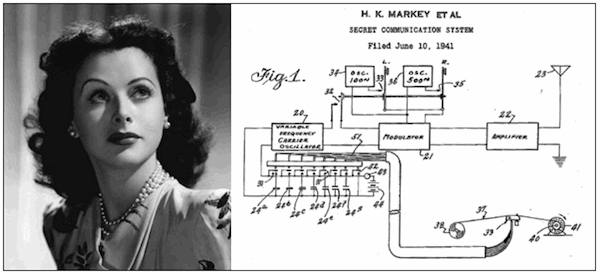
Frequency-hopping was used to avoid jamming in torpedo guidance systems. Hedy and George gave the patent to the United States government to assist in the defeat of Hitler. The U.S. Navy opposed the idea and did not use it during the war. However, in the 1950s, the navy commissioned a project using the technology to acoustically detect submarines using remote-controlled sonar buoys. The “Secret Communication System” was not fully implemented until 1962 when it was used by military ships during the Cuban Missile Crisis. Unfortunately, the patent had expired by then. Hedy and George never received a penny for their invention. It is thought that the torpedoing of the SS City of Benares inspired Hedy to develop the system to jam torpedo frequencies. (Click here to read the blog, The SS City of Benares.) Howard Hughes was so impressed with Hedy that he hired her to improve the aerodynamics of his airplanes.
Click here to watch the video clip Hedy Lamar: Hollywood Star & Inventor.
Today, Hedy and George’s invention serves as the basis for modern spread-spectrum communication technology (e.g., Bluetooth, Wi-Fi, etc.) used in cell phones, wireless internet, and defense satellites. Hedy was posthumously inducted into the National Inventors Hall of Fame in 2014 and is sometimes referred to as the “Mother of Wi-Fi.”
In 1997, Hedy was the first woman to be awarded the Invention Convention’s BULBIE Gnass Spirit of Achievement Award. It was commonly called the “Oscar of Inventing.” Hedy never won a filmdom Oscar but then, I suppose winning the “Oscar of Inventing” probably has a higher intellectual quotient.
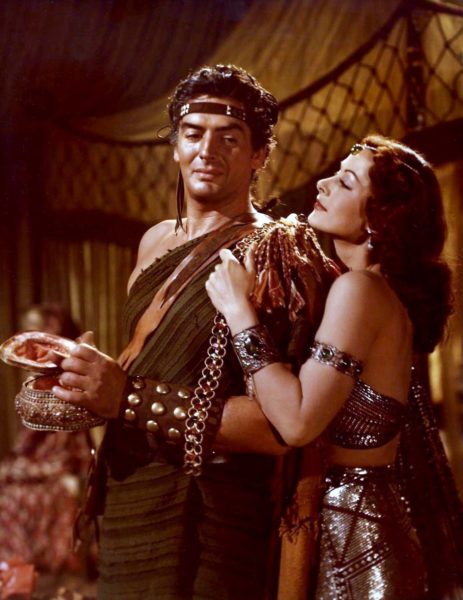
Maurice Rose
Maurice Rose (1899−1945) was born in Connecticut to Rabbi Samuel Rose and Katherin (née Bronowitz). His parents emigrated to America from Poland and three years after Maurice was born, the family relocated to Denver, Colorado. From the earliest age, Maurice knew he wanted to pursue a military career. Lying about his age, Maurice enlisted in the National Guard in 1916 with the hope he could join the Pancho Villa Expedition. His true age was discovered, and Maurice was discharged.
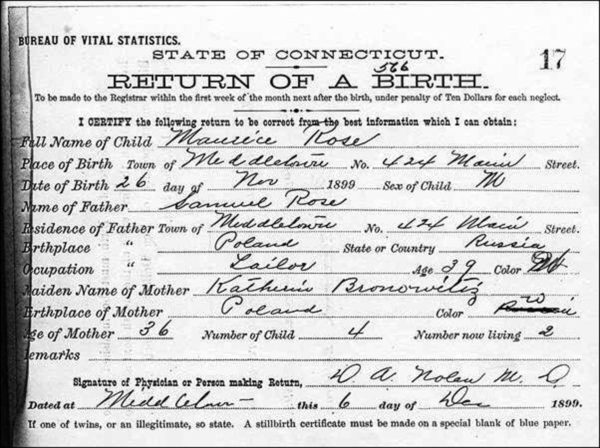
A year later, Maurice enlisted again and was selected for officer training. (He had to lie about his age again since the minimum was twenty-one.) After graduating, Second Lieutenant Rose was assigned to an infantry regiment and in June 1918, his unit arrived in France. Rose was involved in combat during the Meuse-Argonne Offensive and was wounded. He left the hospital without permission to rejoin his unit. The war ended in November 1918 and after staying on as part of the occupation troops, Rose was discharged in June 1919.
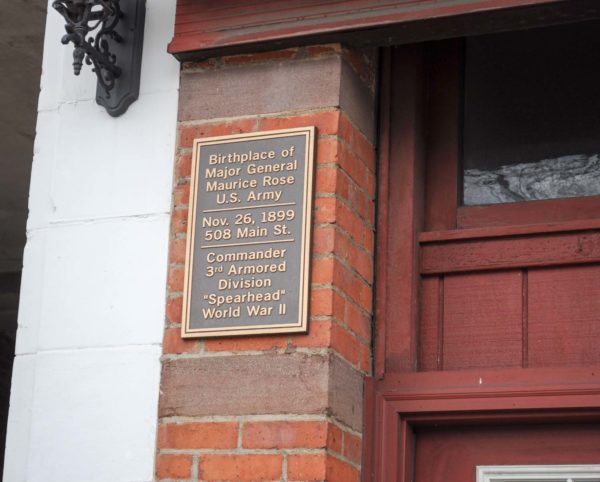
A year later, Rose re-upped with the army and his rank was upgraded to first lieutenant and then captain. He held various assignments including a position as ROTC instructor at Kansas State University. He was promoted to major in 1936 and graduated from the Command and General Staff College (1937) and the Army Industrial College (1940). At the time of the Pearl Harbor attack, Rose was a lieutenant colonel and by early 1942, he was chief of staff for the 2nd Armored Division (2nd). His division was sent to North Africa and Rose became a full bird colonel while remaining chief of staff. Col. Rose came to the attention of Eisenhower and other senior staff when he negotiated the truce and unconditional surrender of German troops in Tunisia. Promoted to brigadier general (one star), Rose was assigned to lead Combat Command of the 2nd during the fighting in Sicily.
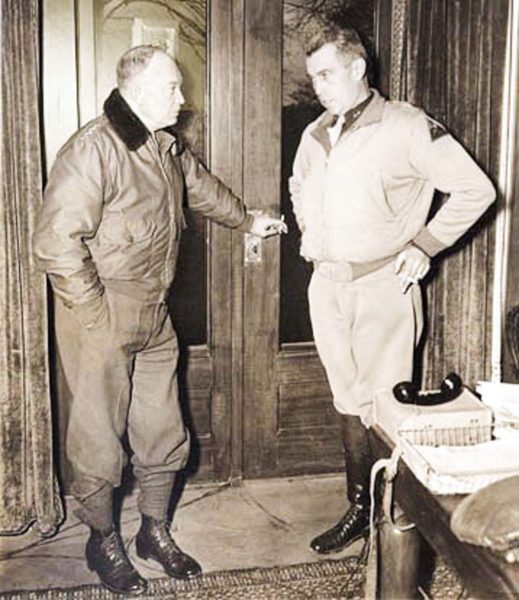
3rd Armored Division
The 3rd Armored Division (3rd) was organized in 1941 as a “heavy” armored division (i.e., a higher ratio of tanks). By March 1942, the 3rd came under the command of II Armored Corps. It was sent to the European Theater in September 1943 for the purpose of conducting pre-invasion maneuvers. The division was stationed in Somerset, England until late June 1944 when it left for Normandy and the push toward Germany.
The 3rd distinguished itself in many ways. The division was the first to:
Cross the German border (12 September 1944)
Capture a German town⏤Rötgen (12 September 1944)
Breach the Siegfried Line (13 September 1944)
Advance across the Siegfried Line in force (15 September 1944)
Down a German plane with guns on German soil (18 Sept. 1944)
Capture a major German city⏤Cologne (5 March 1944)
Invade Germany in force since Napoléon’s armies
Record the longest one-day advance: 101 miles (29 March 1945)
Click here to watch the video clip U.S. 3rd Armored Division in Cologne, World War II.
European Theater
Arriving in France, the 3rd immediately saw action against the Germans during the Normandy Campaign breakout and sustained heavy casualties during the Battle of Saint-Lô. The division became the leading force of the army’s armored divisions thereby earning the nickname “Spearhead.” One of the primary obstacles in Normandy for the troops and especially the tanks was the landscape of hedgerows. The tanks were not able to break through the hedgerows until someone thought up the idea to take the invasion barriers from the beaches and weld them onto the front of the tanks. Hitting the hedgerows at high speed, the tanks smashed their way through allowing the ground troops to follow from behind. (The father of a high school friend once described to me his experience as a foot soldier in Normandy following the tanks through the gaps in hedgerows.)
Click here to watch the video clip 3rd Armored Division in Normandy, France 1994, World War II.
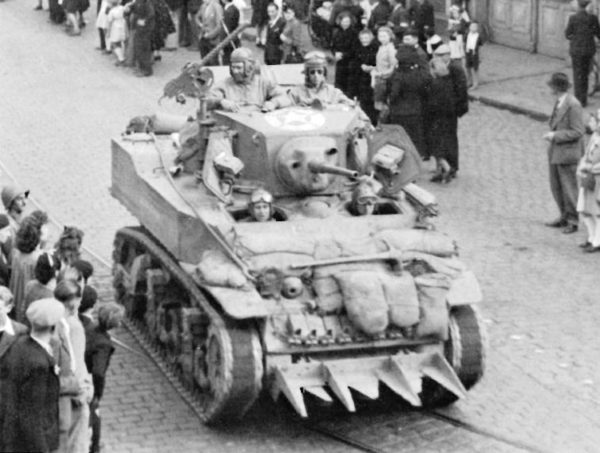
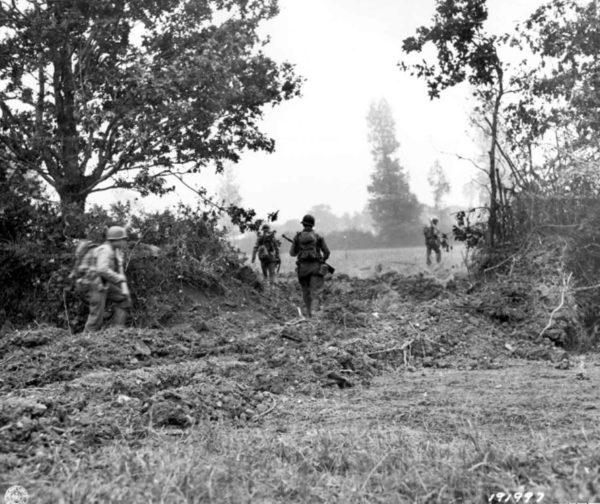
Click here to watch the video clip Hedgerows-the Normandy Bocage.
As part of the Normandy breakout, the 3rd was ordered to help close the Argentan-Falaise Pocket. The battle was successful, and the pocket was sealed. This was the last operation in the breakout and the final battle of Operation Overlord occurred in August 1944 when Paris was liberated. The 3rd crossed the Seine River and moved across France toward Belgium.
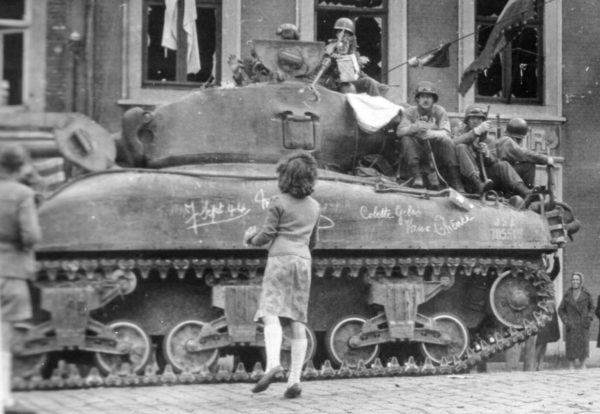
Shortly after reaching the Seine in August, Gen. Omar Bradley relieved the commander of the 3rd, Maj. Gen. (MG) Leroy Watson. Rose was promoted to major general (two stars) and placed in command of the 3rd. He became known for being an aggressive leader who directed his troops from the front rather than the rear. MG Rose always rode with the advance troops under his command. At one point, his tanks hesitated near a railroad bridge and Rose wanted to know why they had stopped. The colonel told him a couple of excuses and Rose responded, “Has anyone checked the bridge?” When he heard no one had done any recon on the bridge, Rose said, “Then I’ll do it myself.”
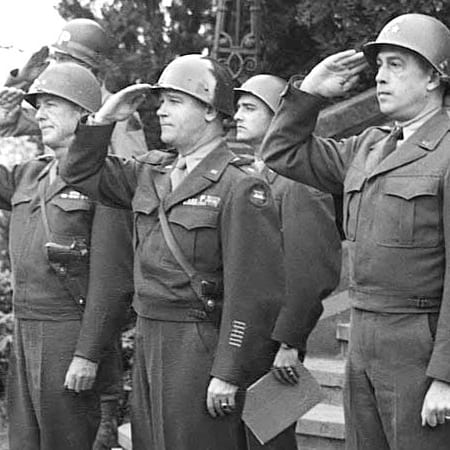
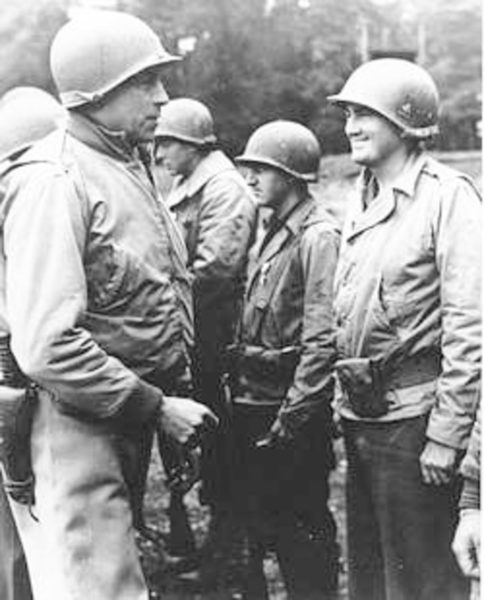
The 3rd was instrumental in stopping the Germans during the Battle of the Bulge in the winter of 1944. The Spearhead division fought in the areas of the deepest penetration by the Germans. The men worked their way south where they met up with Gen. George Patton’s Third Army which had been fighting its way north. After successfully repelling the German army in Belgium, the 3rd resumed its offensive march toward Germany and advanced over the Erft River before arriving at the Rhine River to capture Köln, or Cologne on 7 March 1945. Two weeks later, Rose and his tanks were on their way toward the heavily industrialized area of Germany known as the Ruhr Valley.
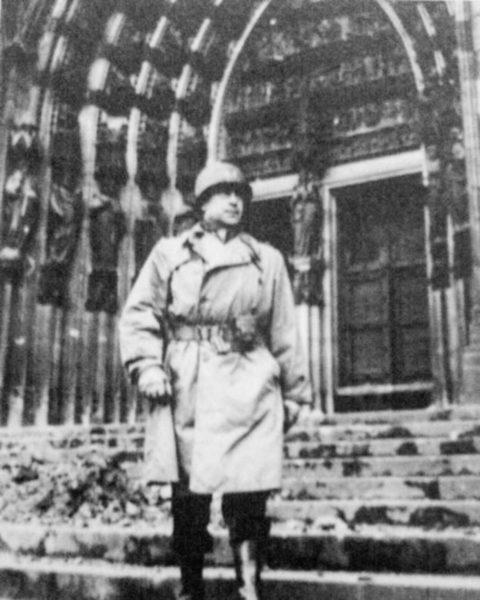
As the 3rd pushed toward the Elbe River and Berlin in April 1945, they discovered KZ Dora-Mittelbau, a concentration camp using forced labor to build the V-rockets. They liberated the camp, and the men immediately began to transport the weak and ill prisoners to nearby hospitals. Unfortunately, MG Rose, the highest-ranking Jewish soldier in the U.S. Army, was not there to see the camp’s liberation.
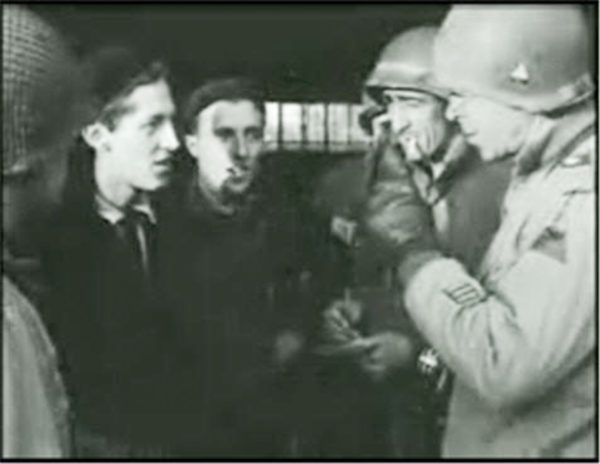
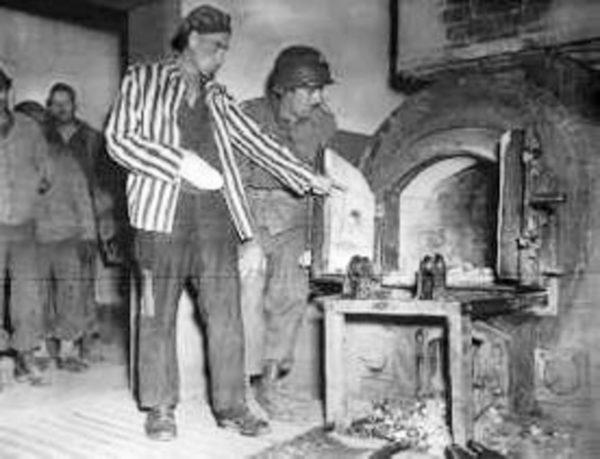
Highest Ranking American Soldier Killed
After leaving Cologne, the 3rd crossed the Rhine River on 25 March 1945 with the mission of attacking the Ruhr. Two days later, Rose killed a German soldier and single handedly captured twelve soldiers with his pistol. On 29 March, the 3rd covered more than one hundred miles, a record that even Gen. George S. Patton never beat.
Click here to watch the video clip The Story of Major General Maurice Rose.
The next day, several miles south of Paderborn in a rural forest area, MG Rose and members of his staff rode at the front of the Task Force Welborn column. The enemy began to fire at them with small arms along with anti-tank mortar. Rose’s lead tank took a direct hit and was destroyed. The general and staff jumped from their jeeps into a ditch. They quickly realized the Germans were surrounding them. The men got back into the jeeps and drove back to the road where they encountered German Tiger tanks. The lead jeep made it past the tanks, but a German Panzer tank cut off Rose’s jeep and pinned it against a tree. The tank hatch opened, and a German soldier raised his pistol and pointed it at the Americans. MG Rose reached for his side arm and the German began shooting. It is not clear whether the general was going to surrender or use the weapon against the soldier. Regardless, MG Rose was hit multiple times with bullets to his head. His body was later found in the jeep. The Germans did not realize who they had killed and did not search his remains. This was clear because his body had not been removed from the jeep and sensitive military documents were found on him. BG Doyle O. Hickey (1892−1961) was promoted to take over the 3rd Armored Division and served as its commander until the division moved into corps reserve status at the end of the war.
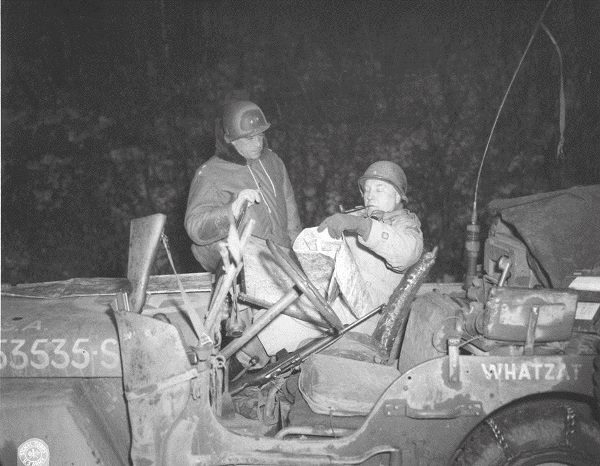
MG Rose was the highest-ranking American killed by enemy fire in the European theater of operations during the war. (A lieutenant general was killed in July 1944, but it was by friendly fire.) He was buried temporarily at the Ittenbach cemetery in Germany, but his remains were ultimately moved and buried at the Margraten American Military Cemetery in the Netherlands (Plot C; Row 1; Grave 1). An elementary school in Margraten adopted the general’s grave. Click here to read the blog, 20 Years After the War: Childhood Memories to learn more about Margraten and how the citizens have adopted the men who now lie eternally in the cemetery.
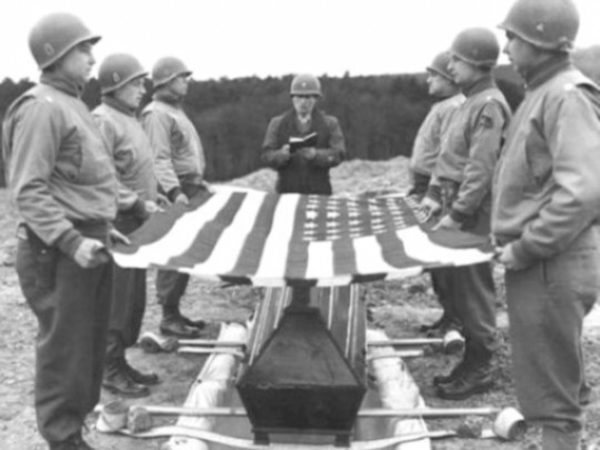
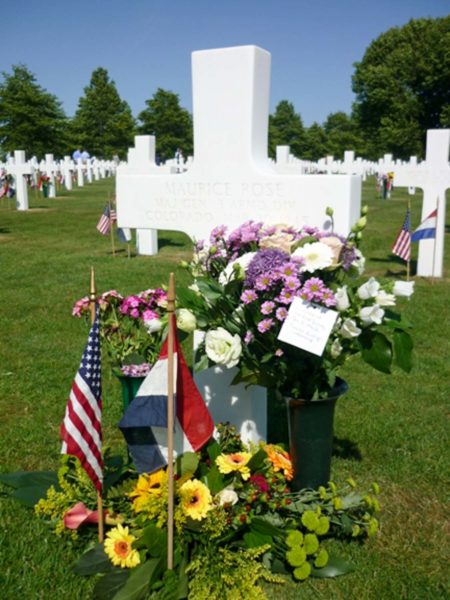
Click here to watch the video clip U.S. Major General Maurice Rose is Buried in Germany in World War II.
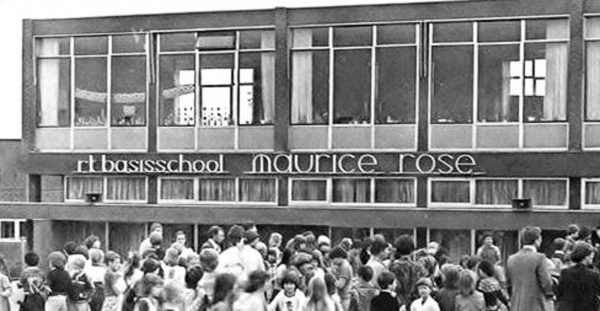
Click here to watch the video clip Story of Margraten Grave Adoptions.
Major General Maurice Rose (ASN: 0-8439), United States Army, was awarded the Distinguished Service Cross for extraordinary heroism in connection with military operations against an armed enemy while serving with the 3d Armored Division, in action against enemy forces from 6 to 9 September 1944. Major General Rose’s intrepid actions, personal bravery and zealous devotion to duty exemplify the highest traditions of the military forces of the United States and reflect great credit upon himself, the 3d Armored Division, and the United States Army.
⏤Distinguished Service Cross Citation
General Orders: Headquarters, First U.S. Army, General Orders No. 86 (25 November 1944).
The Medal of Honor is the only military award higher than the Distinguished Service Cross. Only two women were awarded the Distinguished Service Cross during World War II: Jeannette Guyot (click here to read the blog, The Sussex Plan and a Very Brave Woman) and Virginia Hall (click here to read the blog, Rasputin of the Abwehr).
Maj. Gen. Maurice Rose, who had been with the Second Armored Division at Saint-Lô, was now the commander of the Third Armored and he may have been the best tank commander of the war. He was a leader down where they fight. Not all great generals were recognized. Maurice Rose was a great one and had a good reputation among the people who knew what was going on, but his name was not in the headlines as Patton’s so often was. Rose led from the front of his armored division.
⏤Andy Rooney
World War II correspondent
Excerpt from his book “My War.”
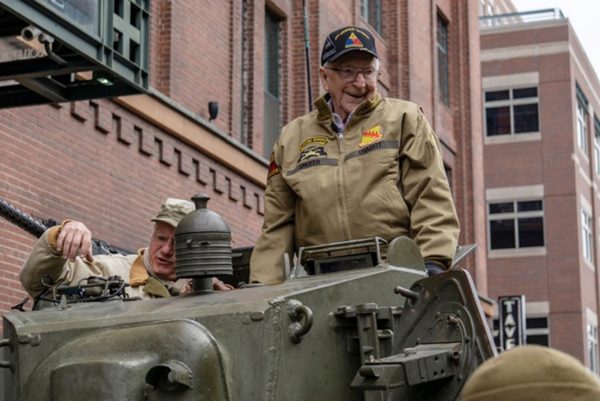
★ Learn More About MG Maurice Rose ★
Bolger, Daniel P. The Panzer Killers: The Untold Story of a Fighting General and His Spearhead Tank Division’s Charge into the Third Reich. New York: Dutton Caliber, 2021.
Ossad, Stephen L. and Don R. Marsh. Major General Maurice Rose: World War II’s Greatest Forgotten Commander. Lanham: Taylor Trade Publishing, 2006.
Click here to learn more about Major General Maurice Rose.
I’d like to thank Ben Savelkoul for allowing me to use images contained in his blog site (see above). He also provided me with useful information regarding the general’s grave. Ben has adopted several graves at the American Military Cemetery Margraten that is located near his home in The Netherlands. Please take the time to visit his web site. Click here.
Disclaimer:
There may be a chance that after we publish this particular blog, the video links associated with the blog are no longer accessible. We have no control over this. Many times, whoever posts the video has done so without the consent of the video’s owner. In some cases, it is likely that the content is deemed unsuitable by YouTube. We apologize if you have tried to access the link and you don’t get the expected results.
What’s New With Sandy and Stew?
Now that we have decided to expand the series to three volumes, we are working hard to revise the first volume. There will be three walks plus new content that will replace two “Métro Walk” sites (the original ones have been moved to the second volume): the National Resistance Museum and the bunkers of Saint-Germain-en-Laye. (Stay tuned for a future blog.) It is impossible for us to visit France right now. So, we’ve asked our friend, Raphaëlle, to be our legs and eyes for the visit to each site. The bunkers are closed to the public but Raphaëlle has an uncanny ability to get into places no one else can access.
It is disappointing that we are so far off schedule, but I think in the long run, it will be better for each book to be a little thinner.
Thank you to all of you who subscribe to our bi-weekly blogs. It seems there isn’t a day that goes by where we don’t increase our readership. Please let your history buff friends and family members know about our blog site and blogs.
Someone Is Commenting On Our Blogs
I’d like to thank Harchand S. B. for reaching out to me regarding an article he wrote about Captain Daljit Singh Kalha. It is about the World War II story of two Sikh prisoners of war in Italy. After fifteen months and one failed escape attempt, they were able to finally escape with the assistance of an Italian doctor and Catholic nuns. I thought you might like to read the article from Harchand’s web site. Please click here to read the article. We often frame our vision of World War II around the primary belligerents and forget that it really was a world war with global participants.
If there is a topic you’d like to see a blog written about, please don’t hesitate to contact me. I love hearing from you so keep those comments coming.
Why Would You Want to Buy Our Walking Through History Books?
Simple.
You like to travel and experience history and historical events. You like to see original buildings that had a significant impact on the people and events of the history you’re engaged with. You want to know the stories behind the brick and mortar in front of you.
The walking tour books are meticulously researched so you can go directly to those sites and learn about the building’s history as well as an introduction to some of the more interesting people associated with it.
We Need Your Help
Please tell your friends about our blog site and encourage them to visit and subscribe. Sandy and I are trying to increase our audience and we need your help through your friends and social media followers.
Thank You
Sandy and I appreciate you visiting with us. We have some exciting things on the horizon, and we’ll keep you updated as we go along.
Share This:
Follow Stew:
Find Stew’s books on Amazon and iBooks.
Please note that we do not and will not take compensation from individuals or companies mentioned or promoted in the blogs.
 Walks Through History
Walks Through History
Copyright © 2021 Stew Ross

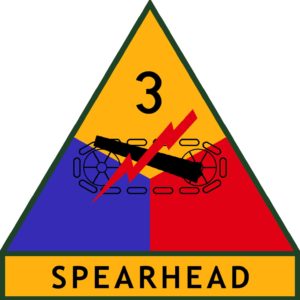
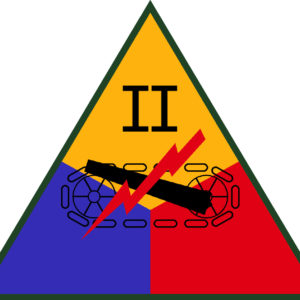
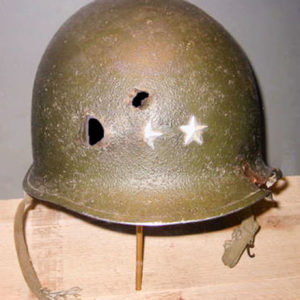
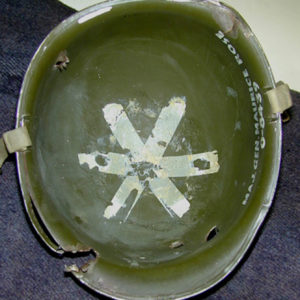
Great written story Stew …. Was an honor for me to help you with info on General Maurice Rose.
We must never forget this man and all the others who died in this terrible war, Lest we Forget.
Thanks Ben! I appreciate your kind words as well as allowing me to use the images from your site. Next time we are in Europe, we’ll get together and you can take us through the cemetery. Stay in touch. STEW
Super story!
Thanks,
Jane
Hi Jane! Thanks very much. Not sure what led me to this story but it linked up nicely with my annual blog on the liberation of Holland. I also made a new friend who lives near the cemetery. Once we are able to travel again, Sandy and I are looking forward to visiting with Ben and going over to the cemetery to see the general’s grave. STEW